Three women are photographed in front of the American Red Cross Clubmobile “Southern Belle” at an unknown location in Europe during WWII.
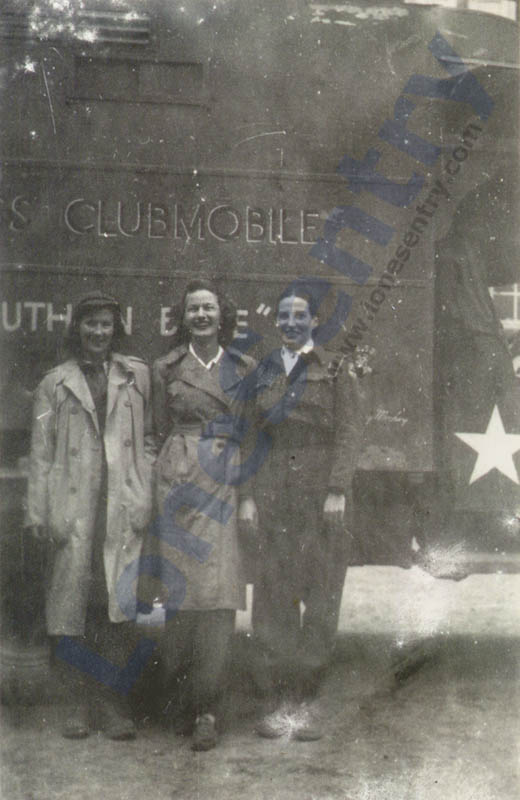
Three women are photographed in front of the American Red Cross Clubmobile “Southern Belle” at an unknown location in Europe during WWII.

A photograph of the famous photographer/journalist Margaret Bourke-White in Germany during 1945. Bourke-White was one of the first female war correspondents and the first woman journalist to work in the combat zone during WWII. Original photo is labelled: Margaret Bourke-White, famous woman news reporter at Fürth, Germany, April 1945.
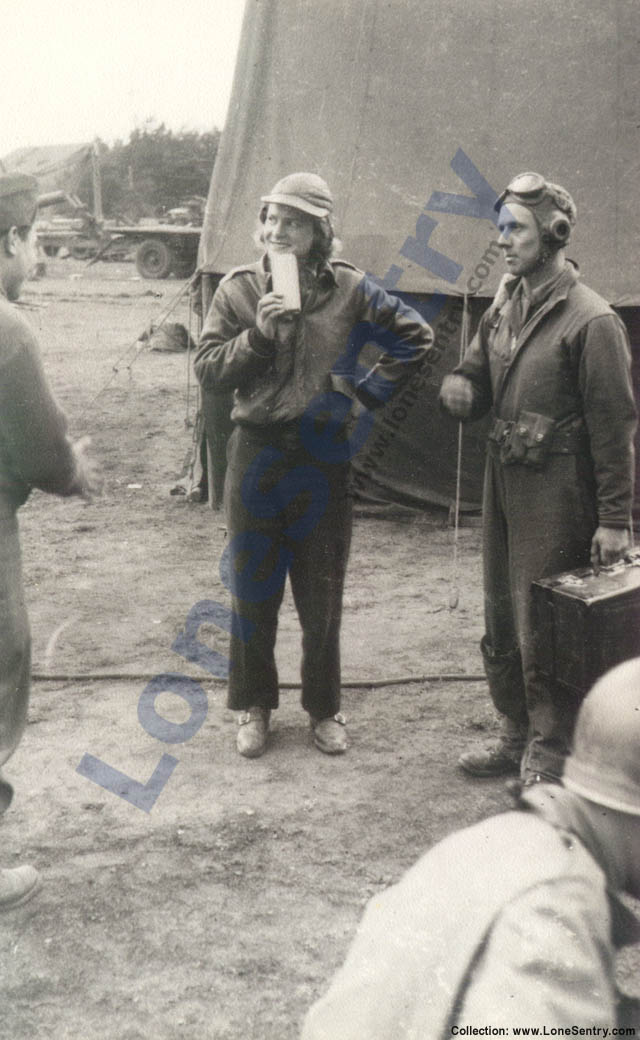
Unique equipment markings are shown in WWII photographs from the U.S. Army’s 85th Engineer Heavy Ponton Battalion in Europe.
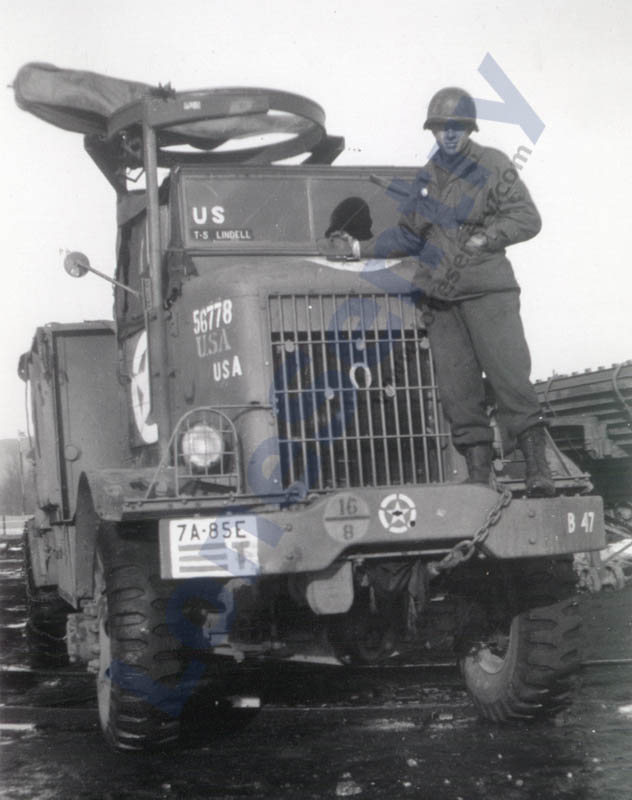
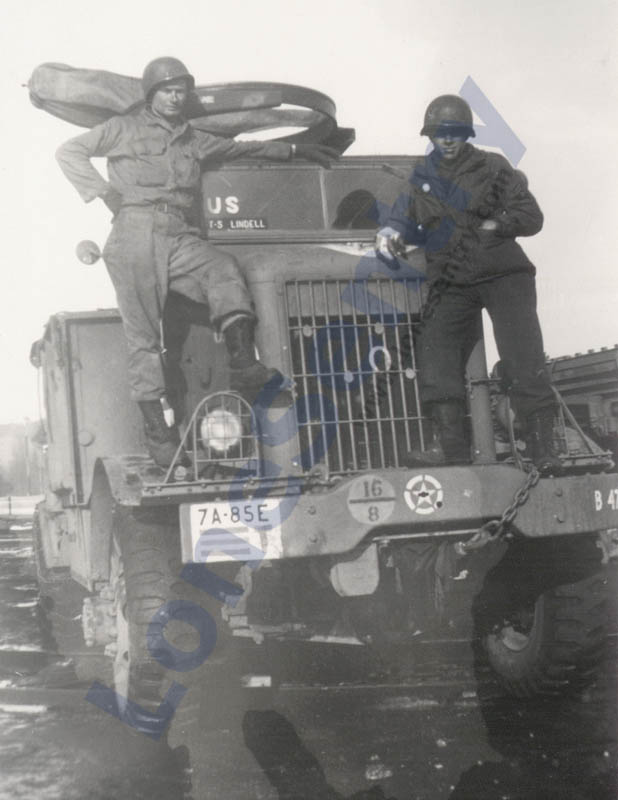
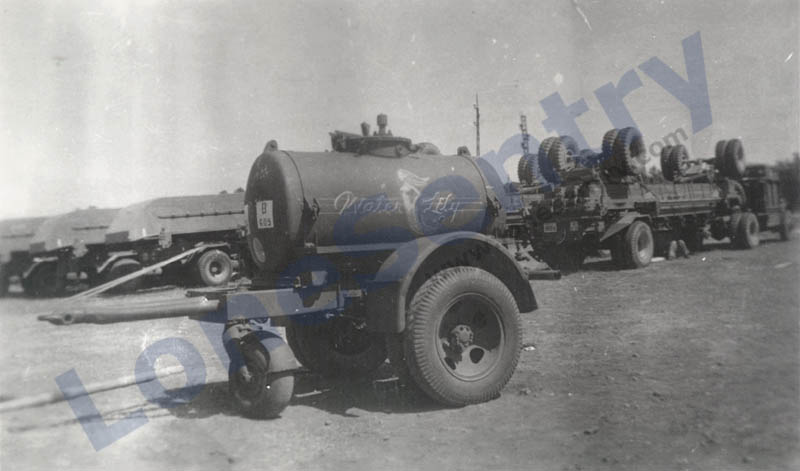
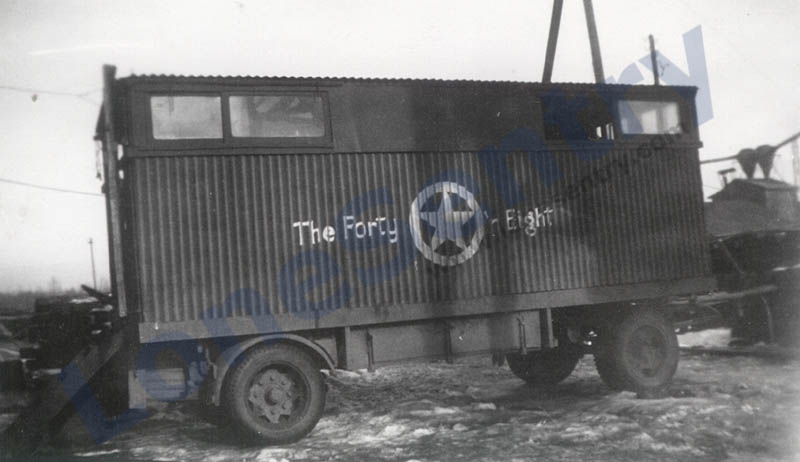
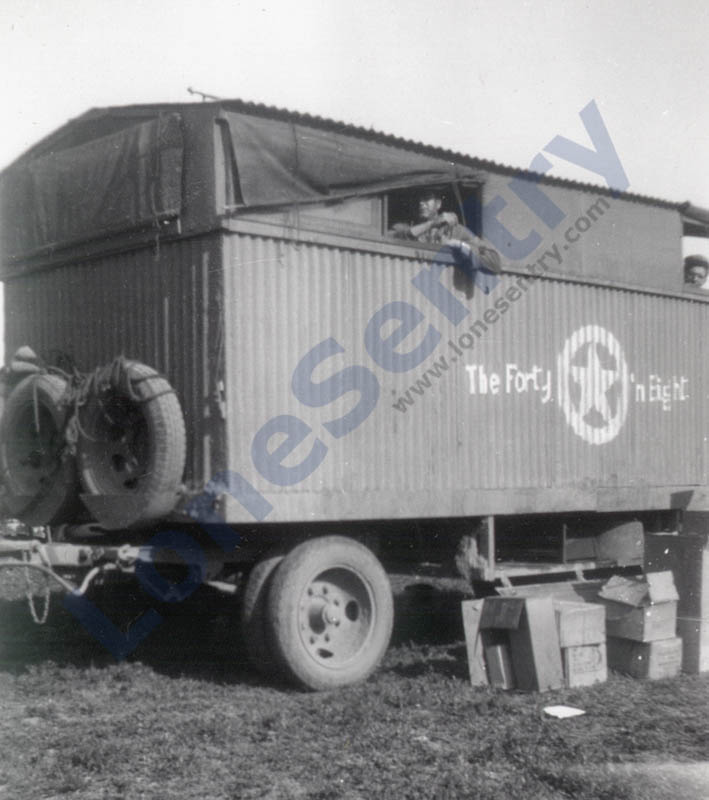
Captured German Panther tanks are shown in three photographs from the unit history of the U.S. Army’s 407th Infantry Regiment, 102nd Infantry Division. The source does not specify a location, but the text suggests the location is near Fallersleben, Germany where in April 1945 the 407th Infantry battled a German armored force with ten “Mark V” tanks.
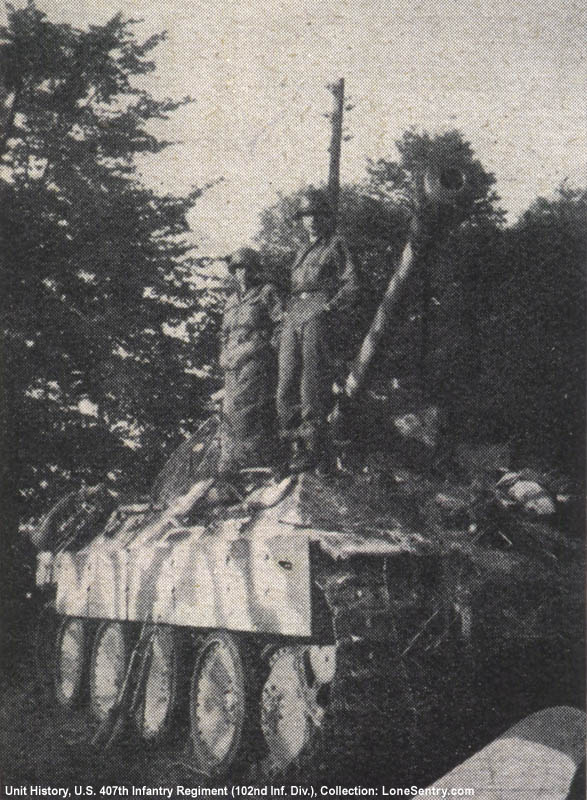
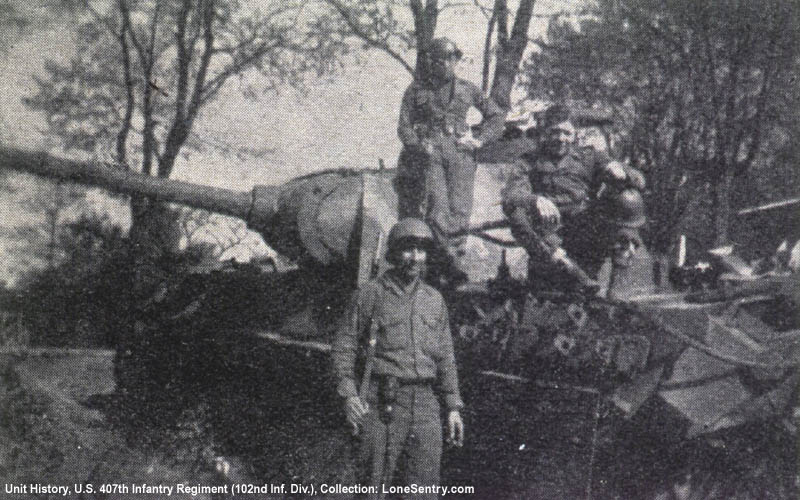
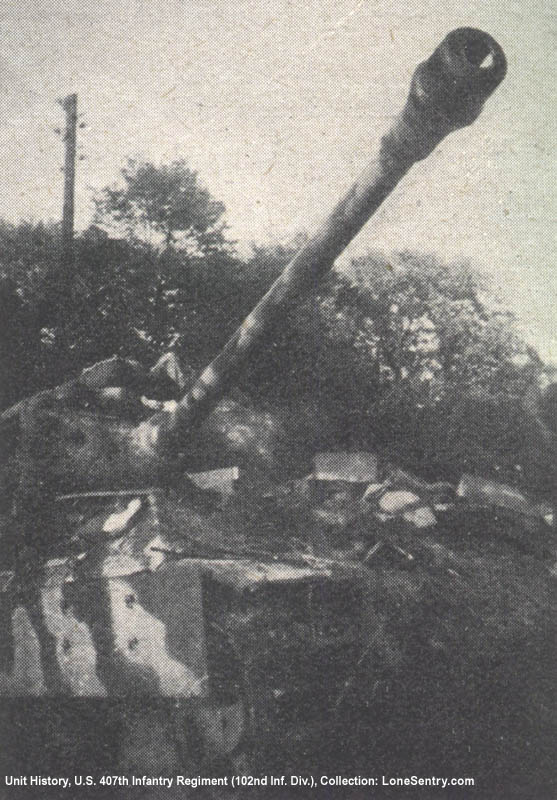
Other sources indicate the vehicles were infrared-ready Panther Ausf. A tanks belonging to Panzer Abteilung Putlos of Panzer Division Clausewitz.
American forces in Tunisia captured immense quantities of German equipment in North Africa including this Panzer II light tank and German Sd.Kfz. 233 armored car featured in the Recognition Journal, May 1944.
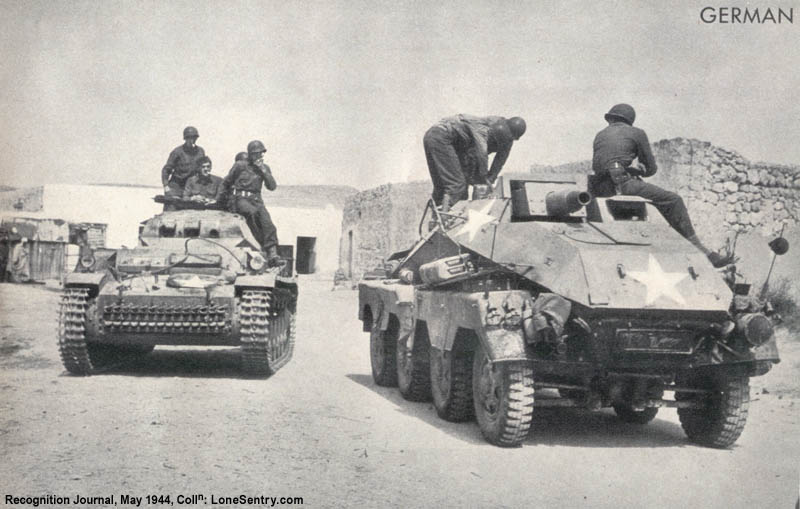
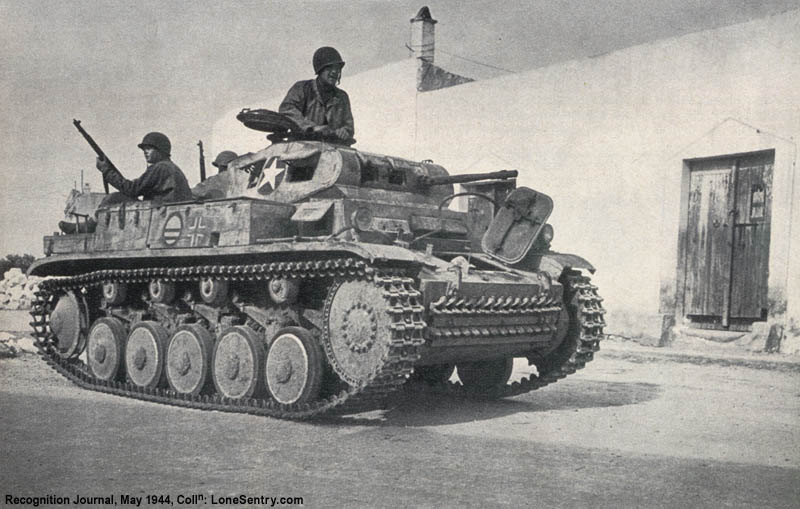
A report from the Intelligence Bulletin, December 1944 on the German use of dummy Panther tanks during World War II. The report includes two photographs of a dummy tank encountered in France in 1944.
DUMMY TANKS
Although German use of dummy tanks in France and Italy has not been extensive, such instances as have been reported make it clear that the enemy is capable of imaginative work along this line. For example, a typical enemy procedure is to site dummy tanks and real antitank guns in such a manner, with respect to the terrain, that Allied tanks maneuvering to engage the dummies will present enfilade targets to the German anti-tank guns.
It is believed that there are no standard German dummy tanks, and that local improvisation is the rule. The reproductions have been sufficiently accurate to look like the real thing when observed from a distance, but have been fairly easy to detect at close range.
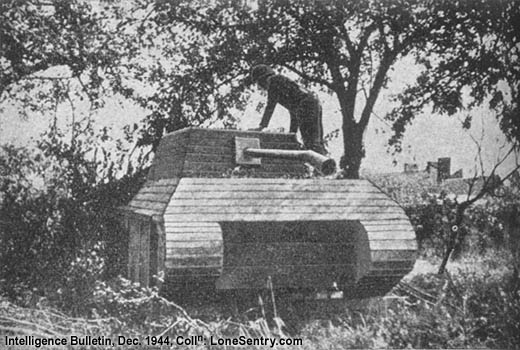
Eight non-mobile dummy tanks discovered behind the AH Line in Italy were particularly notable for the realism of their gun barrels which had been constructed from telephone poles, with a recoil mechanism of stiff cardboard and a shield at the point of entry to the turret. However, the general construction of these dummies was by no means elaborate; for the most part, the Germans simply had used scrap lumber covered with tar paper. The turrets were of plywood, but no makers’ plates, numbers, or other identification marks appeared on them; evidently the turrets, too, were of local manufacture.
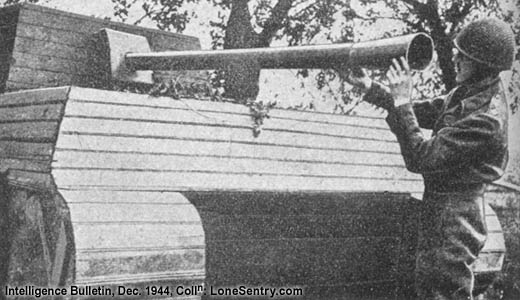
The dummy tank shown in the photographs… was encountered in France, and is a much better job. In the locality in which this specimen was found, all the dummy tanks had wooden frameworks, but were covered with different materials, such as sheet metal, canvas, or wood. The guns on the turrets were lengths of thin-gauge stove piping joined together. One specimen had a gun made from a felled sapling. Evidently these tanks had been prepared in sections, so that they could be transported to tactically suitable points, and assembled there.
A U.S. Signal Corps photo shows soldiers of the 65th Infantry Division crossing the square in Saarlautern, Germany in March 1945.
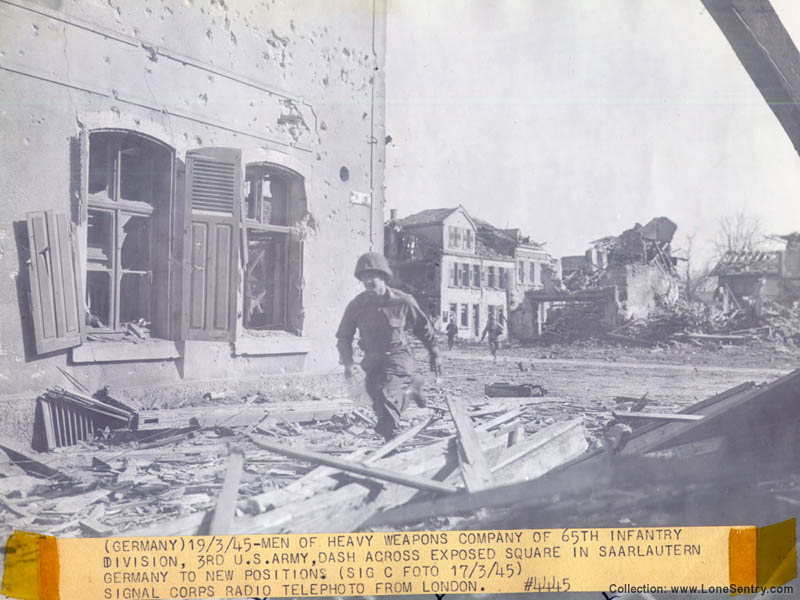
The complete caption on the rear of the photo reads:
ETO HQ 45 20830 17 MAR
CREDIT… U S ARMY SIGNAL CORPS
PHOTOG… T/5 DONALD R. ORNITZ 166
MEN OF HEAVY WEAPONS COMPANY
OF 65TH INFANTRY DIVISION,
3RD U.S. ARMY, DASH ACROSS
EXPOSED SQUARE IN SAARLAUTERN,
GERMANY TO NEW POSITION. SIGNAL
CORPS CAMERAMAN, SECOND, RUNS
WITH THE MEN. E/
65TH INF DIV TUSA
An overview of the U.S. Army’s 75 mm Pack Howitzer M1A1 from Antitank Weapons, Office of the Chief of Ordnance, Washington, D.C., July 1944.
75 MM PACK HOWITZER MlAl ON CARRIAGE M3A3
The 75 mm Pack Howitzer M1A1 on Carriage M3A3 is a light artillery weapon of great mobility. The carriage M3A3 was designed for high speed towing and use with cavalry divisions. It has a split trail and pneumatic-tired disc wheels with divided rims which can be retracted to allow the carriage to rest on a firing base, thus, with the two trails, providing three-point ground support and giving excellent stability in firing. The carriage is equipped with shields. Employing Shell, H.E., A.T., M66 this howitzer can be used as a direct fire antitank weapon.
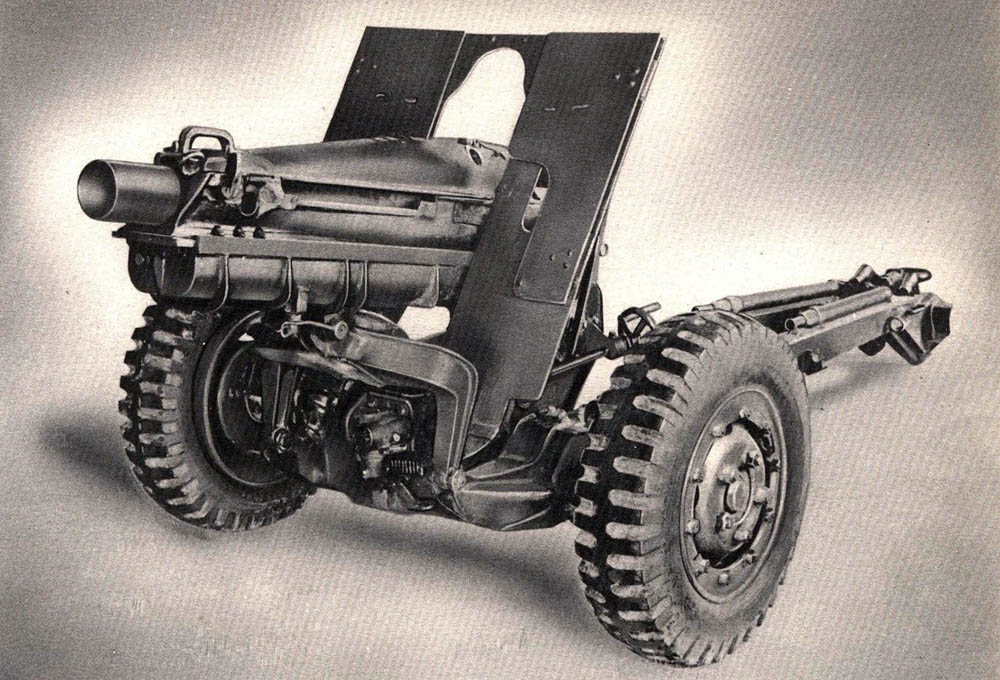
CHARACTERISTICS
| Weight of howitzer and carriage in traveling position | 2,159 lb. |
| Muzzle velocity: | |
| Shell, H.E., M48 | 1,250 f/s |
| Shell, H.E., A.T., M66 | 1,000 f/s |
| Maximum range: | |
| Shell, H.E., M48 | 9,610 yd. (charge 4) |
| Shell, H.E., A.T., M66 | 7,900 yd. |
| Elevation | -9° to +50° |
| Traverse | 45° (22½° Rt., 22½° Lft.) |
| How fired | From firing base |
| Rate of fire | 6 rds. per min. |
| Time to emplace | 3 min. |
AMMUNITION
| Type | Wt. of Projectile | Wt. of Powder Charge | Wt. of Complete Round |
| Shell, H.E., M48 | 14.70 lb. | .92 lb. | 17.67 lb. |
| Shell, H.E., A.T., M66 | 13.27 lb. | .41 lb. | 16.30 lb. |
ARMOR PENETRATION—Shell, H.E., A.T., M66
For both homogeneous and face hardened plate the penetration is between 3 and 4 inches at all angles of armor inclination from 0° to 60° at all ranges at which it is possible to hit the target.
An overview of the U.S. Army’s 57 mm Gun M1 from Antitank Weapons, Office of the Chief of Ordnance, Washington, D.C., July 1944.
57 MM GUN M1 ON CARRIAGE M1A3
The 57 mm Gun M1 was designed as a light weight antitank weapon capable of greater armor penetration than the 37 mm gun. Rapid direct fire laying of the gun on fast moving targets is facilitated by free traverse.
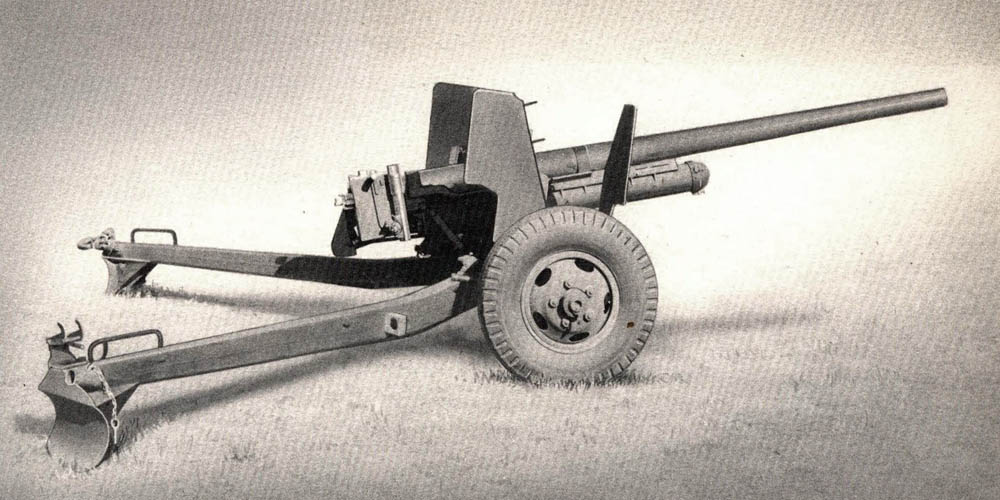
CHARACTERISTICS
| Weight of Gun and Carriage in traveling position | 2,915 lb. |
| Muzzle velocity: | |
| Shot, A.P., M70 | 2,970 f/s |
| Projectile, A.P.C., M86 | 2,700 f/s |
| Range permitted by maximum elevation: | |
| Shot, A.P., M70 | 6,955 yd. |
| Projectile, A.P.C., M86 | 9,840 yd. |
| Elevation | -5° to +15° |
| Traverse (free) | 90° (45° Rt., 45° Lft.) |
| How fired | From wheels or segments |
| Rate of fire | 20-30 rds. per min. |
| Time to emplace | 1 1/2 min. |
AMMUNITION
| Type | Wt. of Projectile | Wt. of Powder Charge | Wt. of Complete Round |
| Shot, A.P., M70 | 6.28 lb. | 2.25 lb. | 12.92 lb. |
| Projectile, A.P.C., M86 | 7.27 lb. | 2.25 lb. | 13.73 lb. |
ARMOR PENETRATION
| Homogeneous Plate | Face Hardened Plate | |||||||||
| Striking Velocity | 0° Obliquity | 30° Obliquity | 0° Obliquity | 30° Obliquity | ||||||
| Range Yards | A.P., M70 f/s | A.P.C, M86 f/s | A.P., M70 | A.P.C., M86 | A.P., M70 | A.P.C., M86 | A.P., M70 | A.P.C., M86 | A.P., M70 | A.P.C., M86 |
| 500 | 2500 | 2510 | 4.3 in. | 3.9 in. | 3.4 in. | 2.8 in. | 3.6 in. | 4.2 in. | 3.0 in. | 3.0 in. |
| 1000 | 2080 | 2320 | 3.4 in. | 3.5 in. | 2.6 in. | 2.6 in. | 2.7 in. | 3.8 in. | 2.2 in. | 2.7 in. |
| 2000 | 1390 | 1960 | 1.8 in. | 2.8 in. | 1.5 in. | 2.0 in. | 1.5 in. | 3.0 in. | 1.2 in. | 2.1 in. |
| 4000 | 860 | 1310 | 1.0 in. | 1.6 in. | .7 in. | 1.1 in. | .8 in. | 1.7 in. | .7 in. | 1.2 in. |
A photograph of a group of four Luftwaffe soldiers wearing the Fliegerbluse from our collection, including a Flieger (one “wing”), Gefreiter (two “wings”), and Obergefreiter (three “wings”).
